In 2002 photographer Corey Arnold left behind a poor economy in San Francisco and headed up to Alaska to try his luck at his longtime passion of fishing. Arnold, who had worked summers during college on a salmon boat in Alaska, signed onto the f/v Rollo, a crabbing boat that fishes in the dangerous Bering Sea. While working long, strenuous hours on the Rollo, Arnold often stole away with the captain’s permission to grab his camera and photograph the crew and the ship. Arnold eventually put together “Fish Work: Bering Sea”, a documentation of his seven adventurous and dicey crab seasons aboard the Rollo.
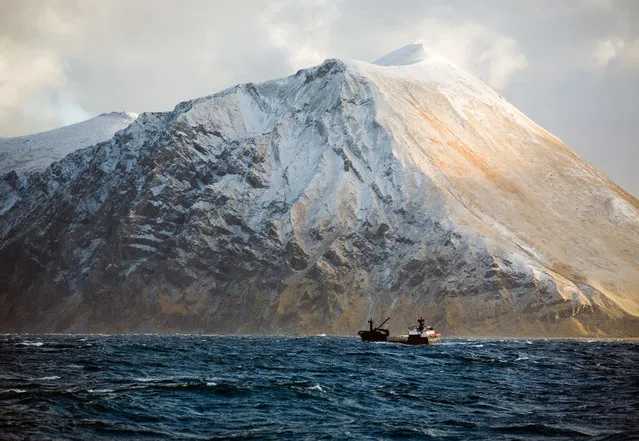
There are two annual crabbing seasons in the Bering Sea, King crab and Opilio crab. During each one- to two-month season, Arnold went on numerous trips crabbing. He went on one or two trips during King season, and three to five during Opilio season. (Photo by Corey Arnold)
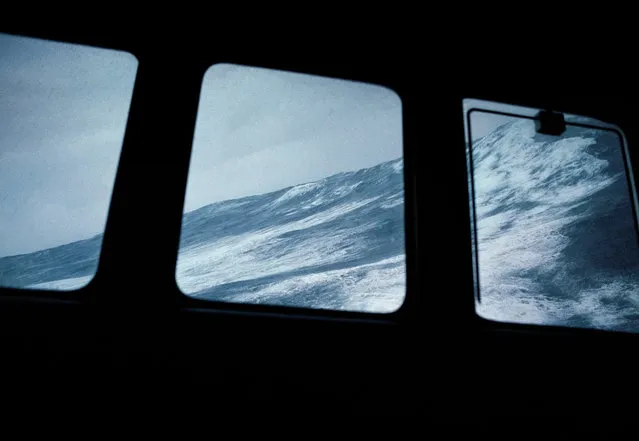
The 107-foot long f/v Rollo is equipped to handle tumultuous seas. Average seas in the Bering Sea have around 10- to 20-feet waves, but Arnold has witnessed massive 50-foot waves and the Rollo's captain, Eric Nyhammer, has witnessed 80-foot waves. Arnold rarely saw his captain get nervous, but when he does, the crew knows it's time to worry. (Photo by Corey Arnold)
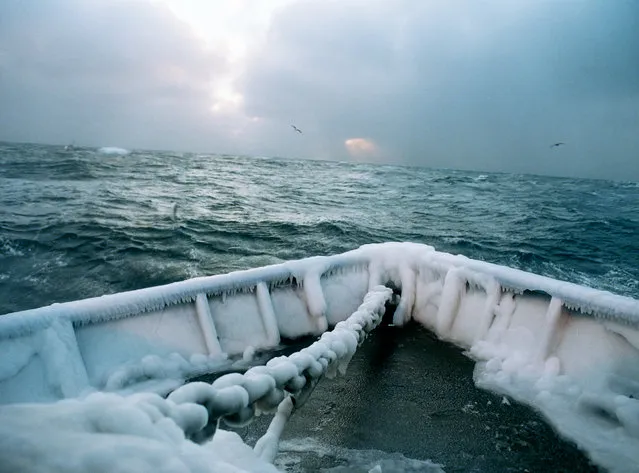
Arnold was never comfortable with the “constant barrage of storms”. “It's nauseating, and you can't sleep because you can't hold yourself in your bunk without constantly getting rolled back and forth by the waves”, Arnold said. (Photo by Corey Arnold)
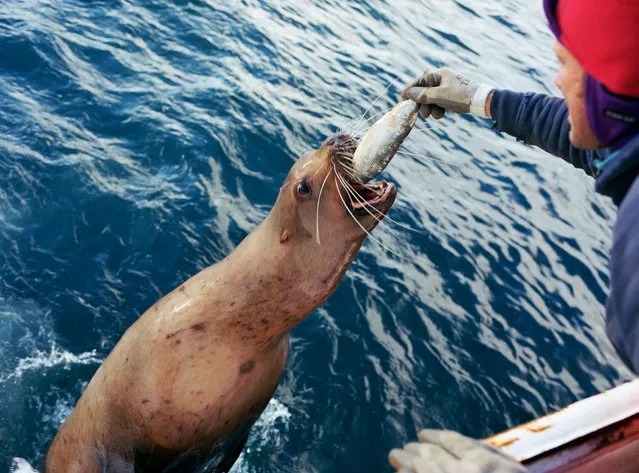
Before heading up to Alaska, the ship loads up with 3 months worth of food. Even so, it's hardly necessary. The ship's cook is constantly steaming fresh crab legs and seafood caught during the day. The hard labour of fishing requires a diet heavy in fat, protein, and omega-3s. Here, a sea lion gets a bite of the grub. (Photo by Corey Arnold)
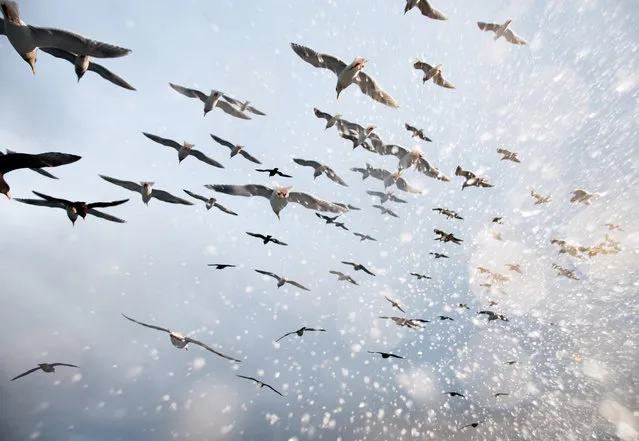
Once in the fishing area, they fish until the boat is filled with crabs. On a good trip, it could take 3 days to fill the boat. A bad one could take 8 or 9 days. (Photo by Corey Arnold)
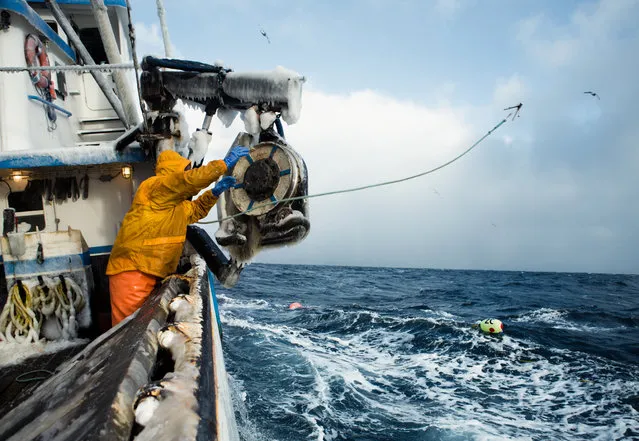
Commercial fishing differs based on what you are fishing. When crabbing, fishermen drop cages, called crab pots, in areas that are known to be filled with crabs. (Photo by Corey Arnold)
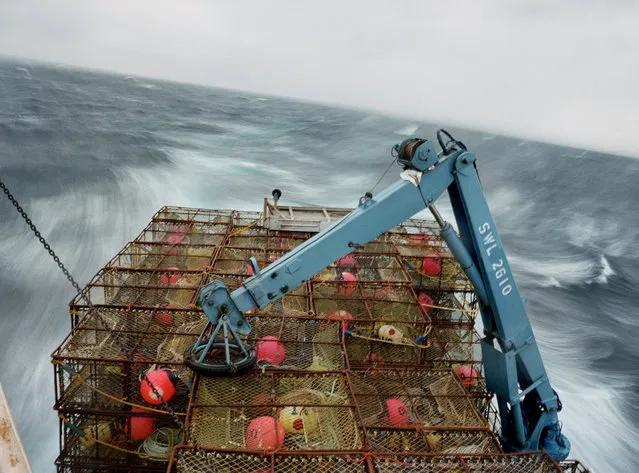
There's no way to know exactly where crabs are, so there's a lot of trial and error. “You never know what's going to come up in the pot”, Arnold said. “It could be stuffed or it could be empty. You can go for days pulling up empty pots”. (Photo by Corey Arnold)
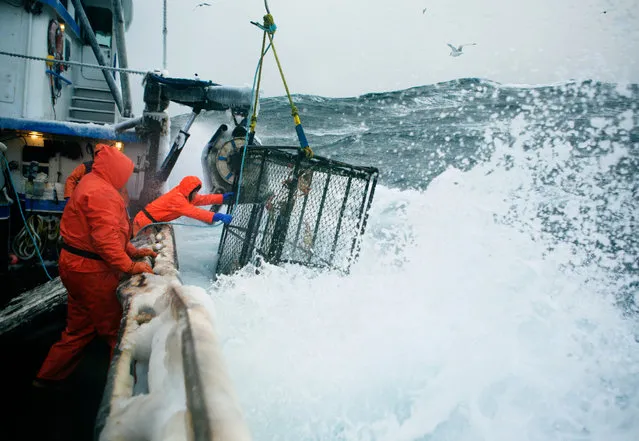
The massive crab pots weigh approximately 800 pounds when empty. A crabbing expedition involves dropping pots in strategic areas and then periodically picking them up. If the pot is full, the crew empties the crabs and then lowers the pot in the same place. If it is empty, the crew loads it onto the deck of the boat so it can be placed somewhere else. (Photo by /Reuters)
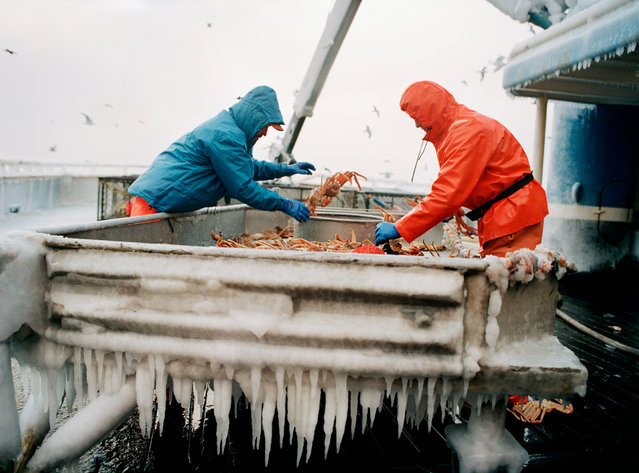
After a full crab pot is pulled up, the crew loads it on the deck with the help of a crane. Then they sort through the crabs at the crab-sorting table. Anything that isn't a legal-size crab (crabs must grow to a certain size before they can be caught) gets thrown back. (Photo by Corey Arnold)
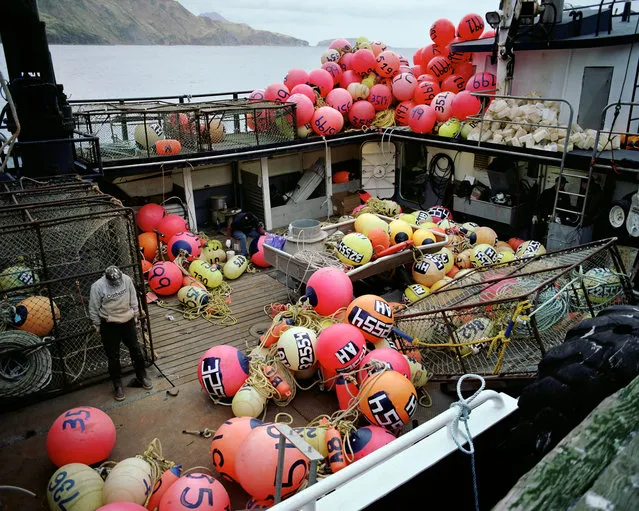
The crew relentlessly baits and dumps crab pots, maintains the ship, and sorts crabs. (Photo by Corey Arnold)
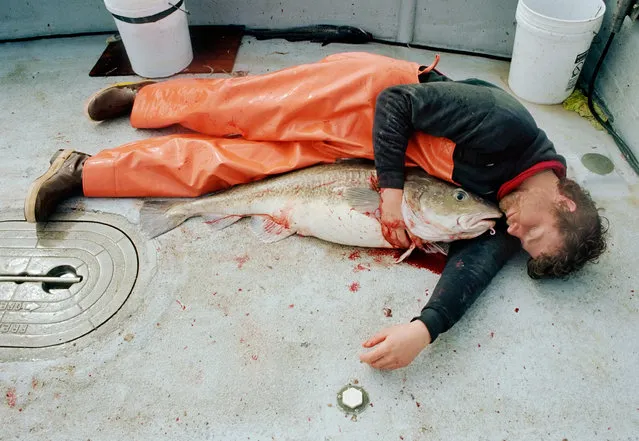
The crew must work 20 hour days for between 3 to 7 days straight, a relentlessly exhausting schedule. (Photo by Corey Arnold)
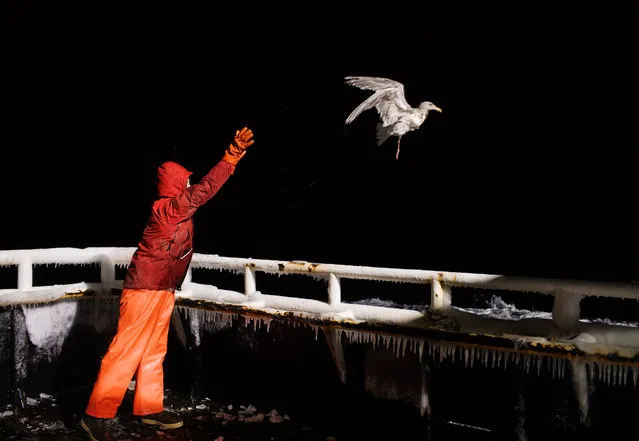
Arnold likens commercial fishing to gambling. “You never know if you are going to hit the jackpot. If you land on a big school of crab, you can make a lot of money. I liked the idea of making a lot of money working long hours over a short period of time, rather than spreading those hours out over the year”. (Photo by Corey Arnold)
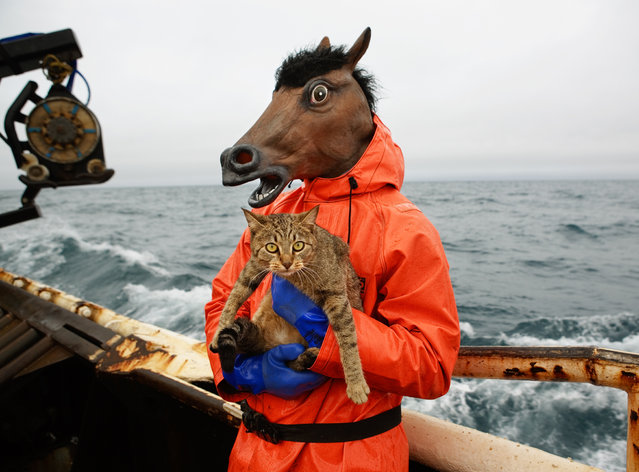
Despite the high pressure, the crew likes to have fun. Arnold says the camaraderie among the crew drew him to commercial fishing. “There are people from all walks of American life. You create this temporary civilisation and you share in this crazy adventure together”, Arnold says. Here: a crew member on the f/v Rollo tries out his Halloween costume and holds the boat Kitty. (Photo by Corey Arnold)
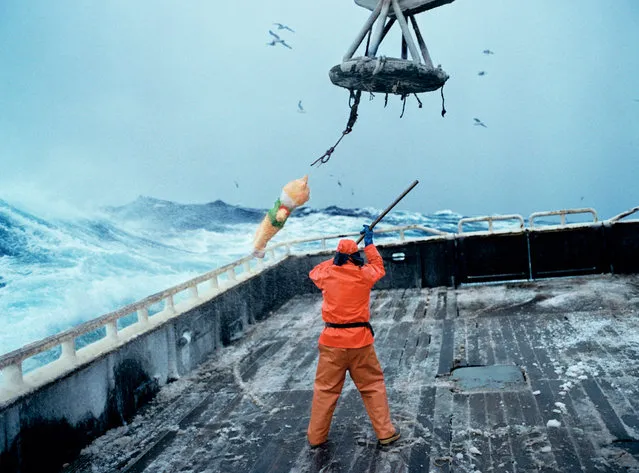
“There are a lot of near misses even on the safest of crab boats”, Arnold says. One time, a crane was lifting a crab pot onto the Rollo's deck when it went over the crab sorting table, where Arnold and other crew members were sorting. As the pot went over, the cable on the crane snapped. The 800-pound pot fell on top of the table, just missing Arnold and his crew members. Here, we see the crane in happier times, as a crew member hits a pinata. (Photo by Corey Arnold)
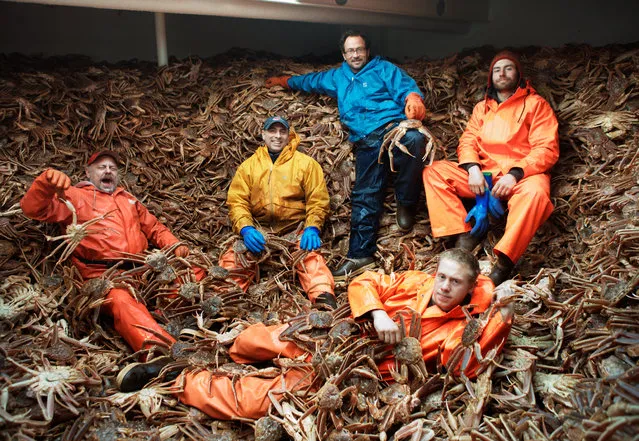
The ship heads home after it's filled up. The f/v Rollo could hold as many as 200,000 Opilio crabs or 150,000 King crabs. (Photo by Corey Arnold)
20 Aug 2014 10:05:00,
post received
0 comments
